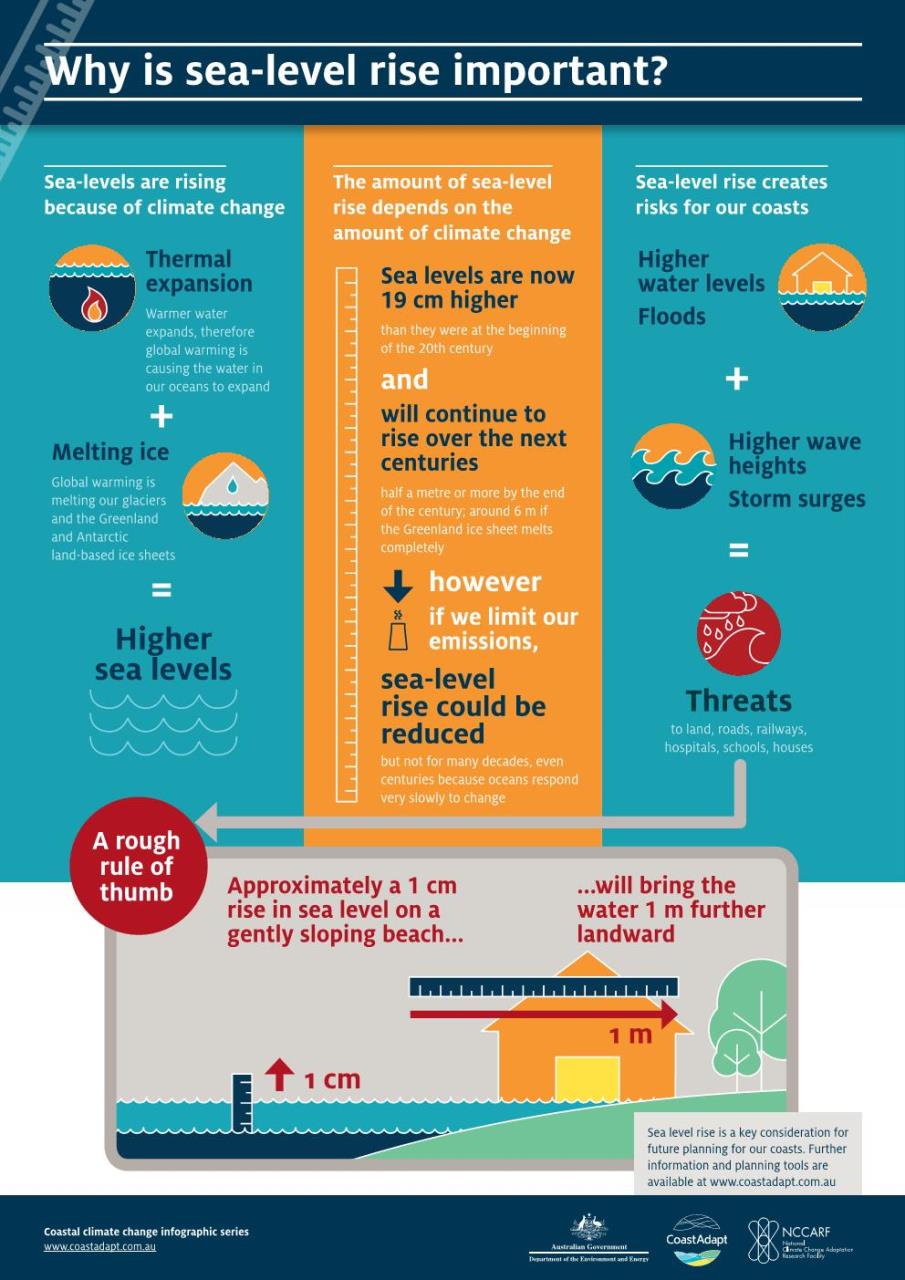Why is seal level rise important?
Global sea levels are rising and increasing the risk to coastal communities from inundation and erosion. The principal components contributing to global average sea level rise are the melting of land-based snow and ice reserves and the thermal expansion of the ocean water mass.
There are two related measures of sea level rise:
- Absolute sea level rise, which is the increase in the ocean water level
- Relative sea level rise, which is the increase in sea level recorded on land and is affected by land movement at the tide gauge.
Sea level rise and its impacts
The projected rise in mean sea level is a concern for management of the coastal zone in the longer term. The potential impacts of sea level rise over time include:
- Higher projected storm surge and inundation levels.
- Landward recession or erosion of sandy shorelines. Depending on the rate and scale of sea level rise, the environmental, social and economic consequences or shoreline recession within low lying inter-tidal areas, in particular, may be significant in the medium to long term.
- Salt water intrusion and landward advance of tidal limits within estuaries. This may have significant implications in the medium to long term for freshwater and salt water ecosystems and development margins, particularly building structures and foundation systems within close proximity to the shoreline.
- Existing coastal gravity drainage, stormwater infrastructure and sewerage systems may become compromised over time as mean sea level rises.
- Sea level rise will influence the entrance opening regimes for intermittently closed and open lakes and lagoons and alter catchment flood behaviour over time.
- The level of protection provided by seawalls and other hard engineering structures will decrease over time due to increasing threat form larger storm surges and inundation at higher projected water levels.
The effects of inundation from a king tide: A snapshot of Future Sea Levels: Photographing the King Tide (2009)
